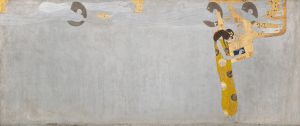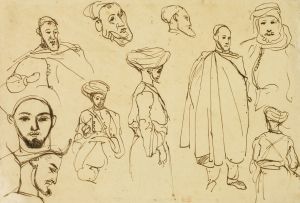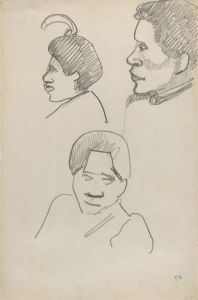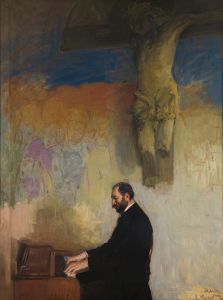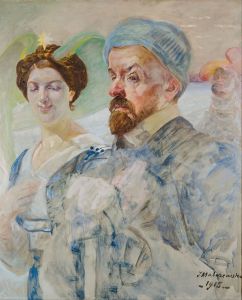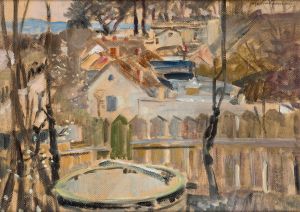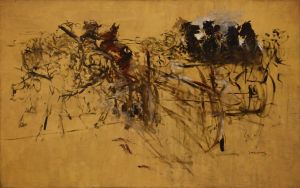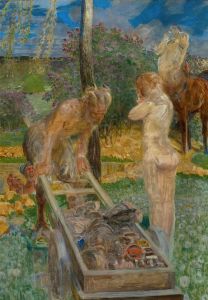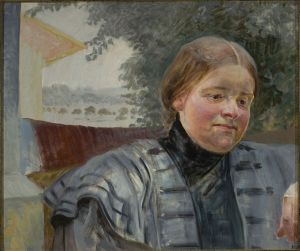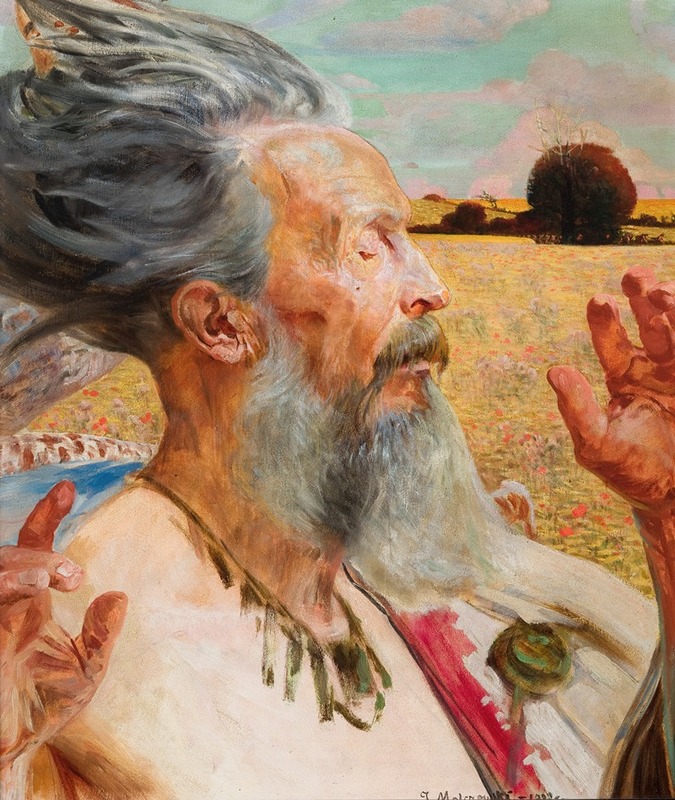
Derwid
A hand-painted replica of Jacek Malczewski’s masterpiece Derwid, meticulously crafted by professional artists to capture the true essence of the original. Each piece is created with museum-quality canvas and rare mineral pigments, carefully painted by experienced artists with delicate brushstrokes and rich, layered colors to perfectly recreate the texture of the original artwork. Unlike machine-printed reproductions, this hand-painted version brings the painting to life, infused with the artist’s emotions and skill in every stroke. Whether for personal collection or home decoration, it instantly elevates the artistic atmosphere of any space.
Jacek Malczewski was a prominent Polish painter associated with the Symbolist movement, known for his unique style that often incorporated elements of Polish folklore, mythology, and national history. One of his notable works is "Derwid," a painting that reflects his deep engagement with symbolic and allegorical themes.
"Derwid" is a painting that exemplifies Malczewski's fascination with Polish culture and history. The title "Derwid" refers to a figure from Slavic mythology, often associated with wisdom and knowledge. Malczewski's choice of subject matter reflects his interest in exploring themes of identity and cultural heritage, which were central to his work during a time when Poland was partitioned and under foreign rule.
In "Derwid," Malczewski employs a rich palette and intricate details to create a composition that is both visually striking and thought-provoking. The painting features a central figure, presumably Derwid, depicted with a sense of mysticism and authority. Malczewski's use of color and light enhances the ethereal quality of the scene, inviting viewers to delve into the symbolic meanings embedded within the artwork.
Malczewski's technique in "Derwid" showcases his mastery of blending realism with symbolism. The detailed rendering of the figure and the surrounding elements demonstrates his skill in capturing the human form and the natural world, while the symbolic aspects of the painting invite interpretation and reflection. This duality is a hallmark of Malczewski's style, where the tangible and the intangible coexist harmoniously.
The painting is also notable for its exploration of the theme of wisdom and the role of the sage or seer in society. By choosing Derwid as the subject, Malczewski taps into the archetype of the wise old man, a figure that appears in various cultural and mythological contexts. This choice reflects Malczewski's broader interest in the spiritual and philosophical dimensions of human experience, a recurring theme in his body of work.
Jacek Malczewski's "Derwid" is a testament to his ability to weave together elements of Polish folklore, mythology, and national identity into a cohesive and compelling visual narrative. The painting stands as an example of his contribution to the Symbolist movement and his role in shaping Polish art during a period of cultural and political upheaval. Through "Derwid," Malczewski invites viewers to engage with the rich tapestry of symbols and meanings that define his artistic vision, offering a glimpse into the complex interplay between history, culture, and imagination.





